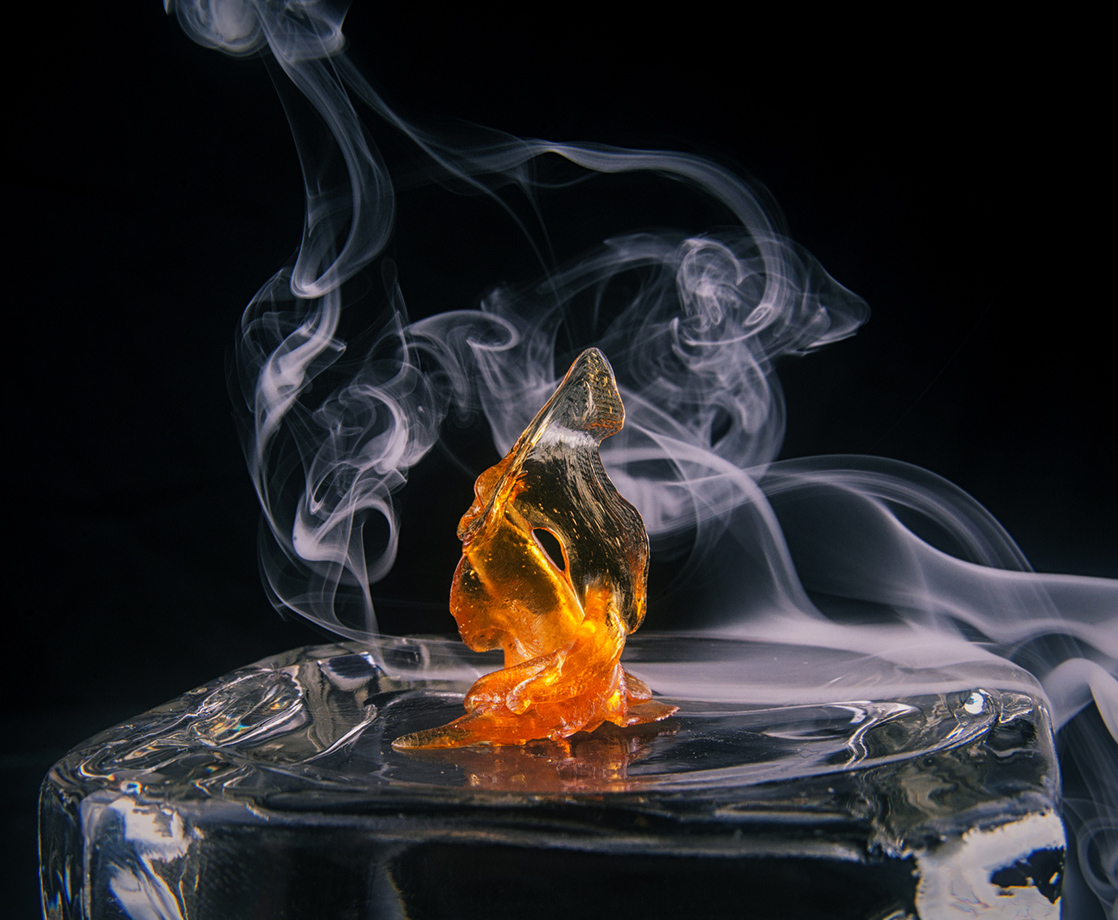This article originally published in 2015, but in honor of 7/10 — the de facto dab holiday — we wanted to resurface this gem for your smoking pleasure. Enjoy!
Over the past five years the cannabis world has been turned upside down with dabs, how to consume them and the surrounding culture. Concentrates (otherwise known as hash oil, dabs, wax, shatter, etc.) carry a heavier dosage while leaving the unneeded plant matter behind. Some methods require solvents like butane, while solventless techniques use things like water or gravity to isolate resin heads. The clear representation of the terpene profiles in both taste and smell is just one of the many reasons that some people prefer extracts over raw cannabis.
Solvent-based concentrates are a mix of oils, waxes, cannabinoids, and terpenoids that are extracted using solvents like butane, CO2, and ethanol. Butane Hash Oil (BHO) started to gain popularity in the early 2000s, and now finds itself as a staple of both medical and recreational markets. The variation with solvents is noticeable by its color, taste, and consistency of the end product. BHO can result in stable shatters to sticky sap, while CO2 usually makes for an oily product.
Butane Hash Oil can be made with either open blasting or a closed loop system. Blasting is done by stuffing raw cannabis into a glass tube and pouring filtered butane through the packed glass. The liquified butane dissolves the trichome heads and cannabinoids because the crystals are coated with a nonpolar wax. Butane is also nonpolar and works as a solvent to gather the resin into a plate below the tube. The solvent remaining in the liquid is then purged out and what’s left is what we know as Butane Hash Oil.
The blasting method has been deemed dangerous after causing explosions that resulted in the death of several amateur manufacturers, but there’s a safer process for those who still want to make concentrates. Closed loop extraction machines use filtration systems to keep the solvents from getting loose. In states like Colorado, concentrate makers are legally required to use a sanctioned machine in order to produce products.
After extracting dabs, there are still unwanted fats, lipids, plant waxes, and plant material that need to be removed from the concentrates. Winterizing and dewaxing are two ways to clean up what has been ran through the tube. Winterizing uses ethanol to separate the solution from your dabs over a two-day period. Dewaxing uses cryogenics (or low temperatures) to do the same thing, but doesn’t use a chemical to do so. Instead, a vacuum oven is ran at low temperatures to get rid of the butane smell and to alter the appearance.
If using chemicals to administer your serving of phytocannabinoids is a bit much, there are always the traditional and updated methods of making solventless hash. The pure unrefined flavor and smell makes for a smooth smoke unlike anything raw cannabis has to offer. Despite there not being any chemicals, the chance for mold is very possible if the hash isn’t dried correctly. Still, the methods that have survived decades and centuries live on in those who prefer natural concentrates. Early hash was collected resin glands by people rubbing cannabis flowers in their hands to make a piece of “Charras.” This process originated in parts of East Asian and made its way through India, The Himalayas, Turkey, and Morocco as far back as the year 100 A.D.

Photo of live resin (extracted from marijuana)
Since the beginning of hashmaking, the techniques have seen vast improvements. Water hash is based on the principle that the resin glands of cannabis are denser than the water used to extract it. By using a variety of meshes and cold water, the oil glands are separated and reside on the material while the leaves and plant material float. The water is then drained and the hash is dried before being pressed.
Rosin is an easily accessible method that gained popularity just a few years ago. By taking a small piece of cannabis flower and sticking it in parchment paper, the internal oils can be squeezed out using a hair straightener that’s ran at its lowest temperature. Now that we’ve seen a demand for the very clean and clear solventless hash, companies have begun making modified t-shirt presses to accommodate a larger run.
For fresh product that is oozing with crystals, there’s a method that will simply collect the parts that are shaken off. Dry sift is made by bouncing nugs off of micron screens that filter resin heads into different categories of quality. After the sift is collected, it is often pressed between parchment paper to turn it into a more dabbable material. Although some people use a hair straighter, it’s possible to melt the concentrates by using your fingers.
If you’re new to the game, be sure to try a little bit of every variety in terms of cannabis extracts. No matter your preference, there’s a vast array of choices to dab that offer their own benefits for everyone. Happy 7/10 everyone!











